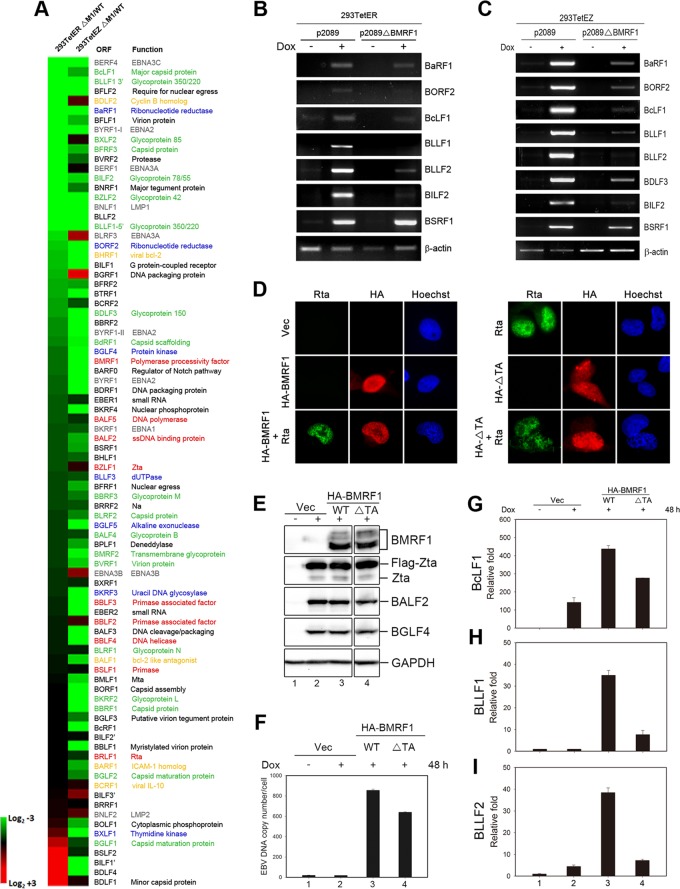FIG 2.
Effects of BMRF1 on viral gene expression in Rta- and Zta-inducible HEK293T cells. (A) At 48 h post-doxycycline treatment, the fold change in expression of EBV genes affected by knockout of BMRF1 in Rta- or Zta-inducible cell lines was converted to log2. The fold change in expression levels of the 28 genes most affected (>3-fold change of the downregulated genes) are indicated in Table 1. Proteins are indicated as follows: gray, latent protein; yellow, cellular homolog protein; red, DNA replication protein; blue, early protein; green, structural protein. Representative data of two independent experiments are shown. (B and C) After doxycycline induction, the expression of EBV lytic genes in 293TetER or 293TetEZ cells harboring p2089 WT and p2089ΔBMRF1 was detected by RT-PCR. Representative data of two independent experiments are shown. (D) Slide-cultured NA cells were cotransfected with control vector or an HA-BMRF1-expressing plasmid coupled with vector control or Rta-expressing plasmid. At 48 h posttransfection, cultured slides were examined for subcellular distribution of HA-BMRF1 and Rta in NA cells by immunofluorescence assay. (E to I) 293TetEZ/p2089ΔBMRF1 cells were transfected with vector or an HA-BMRF1 wild-type or transactivation domain deletion (ΔTA) expression plasmid and induced by doxycycline (50 ng/ml). Cells were harvested for lytic protein detection by Western blotting (E), intracellular EBV DNA copy number detection by qPCR (F), and viral transcript detection (relative fold change in expression) by RT-qPCR at 48 h postinduction (G to H), as described in Materials and Methods.

